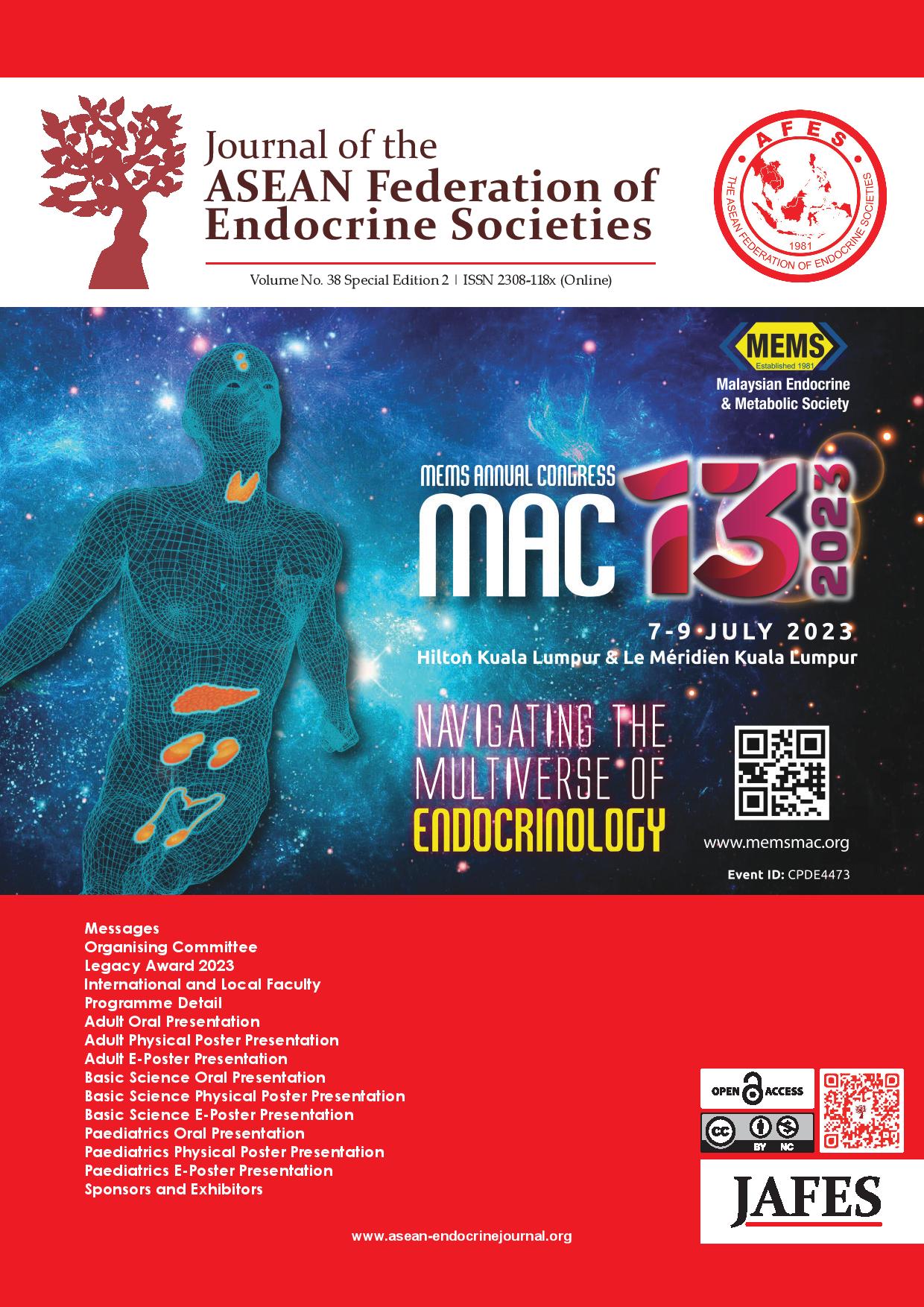PATIENTS’ QUALITY OF LIFE AFTER SWITCHING DESMOPRESSIN FROM TABLET TO SUBLINGUAL LYOPHILIZATE (MELT) FORMULATION
A SINGLE-CENTRE EXPERIENCE
Keywords:
SUBLINGUAL LYOPHILIZATE, CDI, DesmopressinAbstract
INTRODUCTION
The enduring demand for improving the chronic management of central diabetes insipidus (CDI) breeds the need for a variety of formulations of the vasopressin analogue Desmopressin. A new formulation like the sublingual lyophilizate (melt) enhances the bioavailability of desmopressin by nearly 60 percent compared to the tablet.
METHODOLOGY
This observational study applied the Nagasaki Diabetes Insipidus Questionnaire (NADIQ) to assess a patient’s quality of life (QoL) after switching from a desmopressin tablet to a melt formulation for at least one month. The questionnaire was comprised of 12 questions focusing on three clinical variables, namely thirst control (5 questions), polyuria control (5 questions), and treatment satisfaction (2 questions). The scores from each question were compared to identify any difference in QoL after switching the formulation.
RESULTS
A total of 13 patients were analysed. The mean age of the patients was 40.5 ± 15.7 years. Six patients (41.6%) acquired CDI after pituitary surgery and/ or radiotherapy, with at least 3 anterior pituitary hormone deficiencies which were adequately replaced. The mean duration of CDI was 10.5 ± 7.6 years. The mean duration of taking melt formulation was 7.4 ± 6.6 months. The mean daily dose of desmopressin was 350 ± 193.1 mcg/day for the tablet formulation and 180 ± 91.7 mcg/day for the melt formulation. Eleven patients (84.6%) reported an improved total QoL score after changing to melt formulations. The median QoL score increased from 29 (tablet formulation group) to 38 (melt formulation group) (p=0.012). Among the three clinical variables, melt formulation offered a significantly better QoL score for polyuria control (p=0.006).
CONCLUSION
Melt formulation confers a better QoL for patients with CDI at a lower daily dose as compared to the tablet formulation.
Downloads
References
*
Downloads
Published
How to Cite
Issue
Section
License
Copyright (c) 2023 Chee Koon Low, Vanusha Devaraja, Azraai Bahari Nasruddin, Zanariah Hussein

This work is licensed under a Creative Commons Attribution-NonCommercial 4.0 International License.
The full license is at this link: http://creativecommons.org/licenses/by-nc/3.0/legalcode).
To obtain permission to translate/reproduce or download articles or use images FOR COMMERCIAL REUSE/BUSINESS PURPOSES from the Journal of the ASEAN Federation of Endocrine Societies, kindly fill in the Permission Request for Use of Copyrighted Material and return as PDF file to jafes@asia.com or jafes.editor@gmail.com.
A written agreement shall be emailed to the requester should permission be granted.







